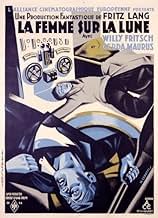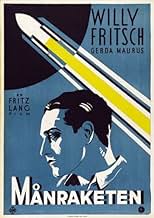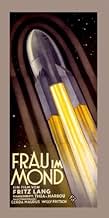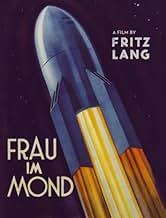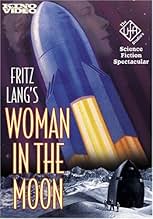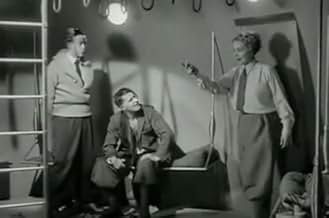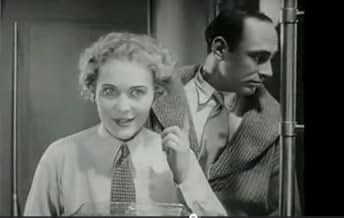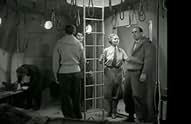IMDb-BEWERTUNG
7,3/10
4097
IHRE BEWERTUNG
Ein beharrlicher Wissenschaftler reist in der Hoffnung zum Mond, dort reichhaltige Goldvorkommen zu entdecken.Ein beharrlicher Wissenschaftler reist in der Hoffnung zum Mond, dort reichhaltige Goldvorkommen zu entdecken.Ein beharrlicher Wissenschaftler reist in der Hoffnung zum Mond, dort reichhaltige Goldvorkommen zu entdecken.
- Auszeichnungen
- 1 Nominierung insgesamt
Gustl Gstettenbaur
- Gustav
- (as Gustl Stark-Gstettenbaur)
Gustav von Wangenheim
- Hans Windegger - Engineer
- (as Gustav v. Wangenheim)
Alexa von Porembsky
- Eine Veilchenverkäuferin
- (as Alexa v. Porembska)
Heinrich Gotho
- Der Mieter vom II. Stock
- (as Gotho)
Alfred Loretto
- Zwei eindeutige Existenzen
- (as Loretto)
Max Maximilian
- Grotjan, Chauffeur bei Helius
- (as Maximilian)
Edgar Pauly
- Zwei eindeutige Existenzen
- (as Pauly)
Karl Platen
- Der Mann am Mikrophon
- (as Platen)
Mahmud Terja Bey
- Fünf Gehirne und Scheckbücher
- (as Terja Bey)
Hermann Vallentin
- Fünf Gehirne und Scheckbücher
- (as Vallentin)
Empfohlene Bewertungen
The first half of this film; the set-up of the flight, the introduction to the main characters, a love triangle, and an international conspiracy; is frankly boring. But once the flight begins, action tenses up and things get interesting.
For 1929, the science is sometimes prescient-- a three stage rocket, a vertical assembly building, and a monstrous rolling gantry crawler-- are suggestive of the Apollo program. Other times the science is more romantic, using dowsing rods and an egg-shaped moon. The eggy moon allows a far-side with a breathable atmosphere. But an eggy moon really isn't less scientific than faster than light travel, which is a staple of modern space flight science fiction. FTL travel is simply a mechanism whereby a cast of characters can visit multiple star systems; the eggy moon allows the visit to a breathable world in the context of a 1930s Europe.
This movie understandably has fairly primitive special effects. One major effect, a rotating barrel decorated as the moon, is charming.
The ending is definitely touching. In the sub-genre of science fiction/space flight, this is an important and interesting film and well worth suffering through the first half.
For 1929, the science is sometimes prescient-- a three stage rocket, a vertical assembly building, and a monstrous rolling gantry crawler-- are suggestive of the Apollo program. Other times the science is more romantic, using dowsing rods and an egg-shaped moon. The eggy moon allows a far-side with a breathable atmosphere. But an eggy moon really isn't less scientific than faster than light travel, which is a staple of modern space flight science fiction. FTL travel is simply a mechanism whereby a cast of characters can visit multiple star systems; the eggy moon allows the visit to a breathable world in the context of a 1930s Europe.
This movie understandably has fairly primitive special effects. One major effect, a rotating barrel decorated as the moon, is charming.
The ending is definitely touching. In the sub-genre of science fiction/space flight, this is an important and interesting film and well worth suffering through the first half.
I saw the original premiere presentation director's cut of this movie in January of 2003, with excellent musical accompaniment by Dennis James at the Paramount theater. Perfect, restored print, a movie that I have always wanted to see (since it was mentioned in Carlos Clarens "Horror Movies" first published in 1967). HOWEVER... The tendency toward "original, premiere presntation" director's cut reached new heights of lunacy (pun intended) with this movie. It ran more than three hours and 40 minutes! According to it's IMDB entry the original version that ran in the US was 95 minutes with longer versions (running time up to 2 and a half hours) running in Europe. At times I felt as if I had been placed in hypersleep in prep for a deep space expedition of my own! The film certainly lived up to advance billing, yet certain things, like the 45-minute opening dinner scene, were obviously way longer than they needed to be. One doesn't need to be a genius to know that after the premiere, Fritz Lang probably cut the dinner scene to about three minutes, removed whole sections, and generally tightened up an otherwise improbable story. For example, the moon is portrayed as a rather pleasant (if poorly stocked with resources for survival) beach resort. Everyone runs around in sweaters and jodhpurs, and true love seems destined to survive the wait for a return rescue rocket. Other stuff was great: the launch pad, countdown and the experience of the G forces on blastoff were, well the archetypal events for all the space operas to follow. A good movie, but probably seen to much better effect on video or in the shorter release version (if either ever turns up).
As Martin Sheen said in the fine documentary "Space," this movie deals seriously with almost every aspect of a flight to the moon. It makes some dreadful errors that, even in 1929, could and should have been avoided (an atmosphere on the moon, for example). But, it nevertheless treats the subject and the viewer with respect. When I saw this movie at a New York revival house, a live pianist provided the silent film's accompaniment. I encourage you to see it this way, as that somehow made it even easier to put myself in the place of an early 20'th century filmgoer, and see this fine movie for what it was. The story is light, but the beckoning mystery of outer space is captured in a way that will make you feel you know something more than you used to about the people who made, and first saw, these images. And, when you do, remember that real space flight was 30 _years_ away. (Later, you might ponder that the first lunar landing is now _more_ than 30 years ago, but do that after you enjoy this sweet look at, as Fred Pohl put it in another, related, context, "the way the future was.")
One extra bit of advice: Keep your ears open at the moment of launch. All of the effects in this movie are, naturally, simple and gray-haired. Nevertheless, when the rocket actually took off, my audience gave an audible reaction because, I think, Lang decided to emphasize an aspect of what a rocket is, and what it can do, that virtually all later film-makers have decided to ignore. They should see this movie, and learn a little something.
One extra bit of advice: Keep your ears open at the moment of launch. All of the effects in this movie are, naturally, simple and gray-haired. Nevertheless, when the rocket actually took off, my audience gave an audible reaction because, I think, Lang decided to emphasize an aspect of what a rocket is, and what it can do, that virtually all later film-makers have decided to ignore. They should see this movie, and learn a little something.
This was Fritz Lang's last silent film. It is a science fiction adventure in which a scientist, Professor Georg Manfeldt, had theorized that there were large supplies of gold on the moon. He was ridiculed by his peers and disgraced because of this. However, a wealthy industrialist believes Manfeldt's theory and has been building a rocket to travel to the moon. when a group of wealthy men who control the world's gold supply feel threatened by the possibility the theory may be correct, they threaten to destroy the rocket unless one of their agents, Turner, is allowed to go on the expedition too. Apparently Lang's film got so much right about space travel that the Germans seized the models used in the film as state secrets when they started their own rocket-building program. This film runs 169 minutes and is quite slow in places. It has some very interesting and thrilling scenes, but it is probably one of the weaker of Lang's films that I have seen.
Let's face it 'Woman in the Moon' is hardly one of the great Fritz Lang's best efforts: far, far too long, badly paced, ludicrously over-melodramatic and just plain silly. Nevertheless, it contains prescient details in regards to space travel and (as should be expected) looks absolutely fabulous. Lang even made claims that this was the first film to feature a rocket launch countdown and who are we to question him? One thing you can be certain of is that going to the moon would never again look so stylish. Even though this is the tail end of Lang's classic silent period, those who love films like 'Dr. Mabuse' and 'Spies' will still find much to enjoy here.
Wusstest du schon
- WissenswertesThis film shows the first countdown to the launch of a rocket - not just the first one in a movie, but the first ever. It was invented as a dramatic device for the movie. Previously, all launches were begun with a count upward from zero to a designated number (usually ten). Also depicted for the first time are the use of liquid rocket fuel, a rocket with two stages, and zero gravity in space.
- PatzerWhen Helius listens for Friede's heartbeat, fearing that the launch may have killed her, we can see her breathing heavily.
- Zitate
[Opening intertitle]
The Author: "Never" does not exist for the human mind... only "Not yet."
- Crazy CreditsFritz Rasp is billed in the opening credits as "Der Mann, der sich Walter Turner nennt" or "The man who calls himself Walter Turner."
- Alternative VersionenThe film was given a release from Kino Internation on DVD, running a length of 169 minutes. The 2000 restoration runs 200 minutes. The original showing in the United States ran 156 minutes and was later cut to 95 minutes.
- VerbindungenEdited into Geschichte(n) des Kinos: Le contrôle de l'univers (1999)
- SoundtracksHeimlich singt für uns die Liebe
Music by Willy Schmidt-Gentner
Lyrics by Fritz Rotter
Sung by Gerda Maurus and Willy Fritsch
Top-Auswahl
Melde dich zum Bewerten an und greife auf die Watchlist für personalisierte Empfehlungen zu.
- How long is Woman in the Moon?Powered by Alexa
Details
- Erscheinungsdatum
- Herkunftsland
- Sprache
- Auch bekannt als
- Woman in the Moon
- Drehorte
- Produktionsfirmen
- Weitere beteiligte Unternehmen bei IMDbPro anzeigen
- Laufzeit
- 2 Std. 36 Min.(156 min)
- Sound-Mix
- Seitenverhältnis
- 1.33 : 1
Zu dieser Seite beitragen
Bearbeitung vorschlagen oder fehlenden Inhalt hinzufügen

